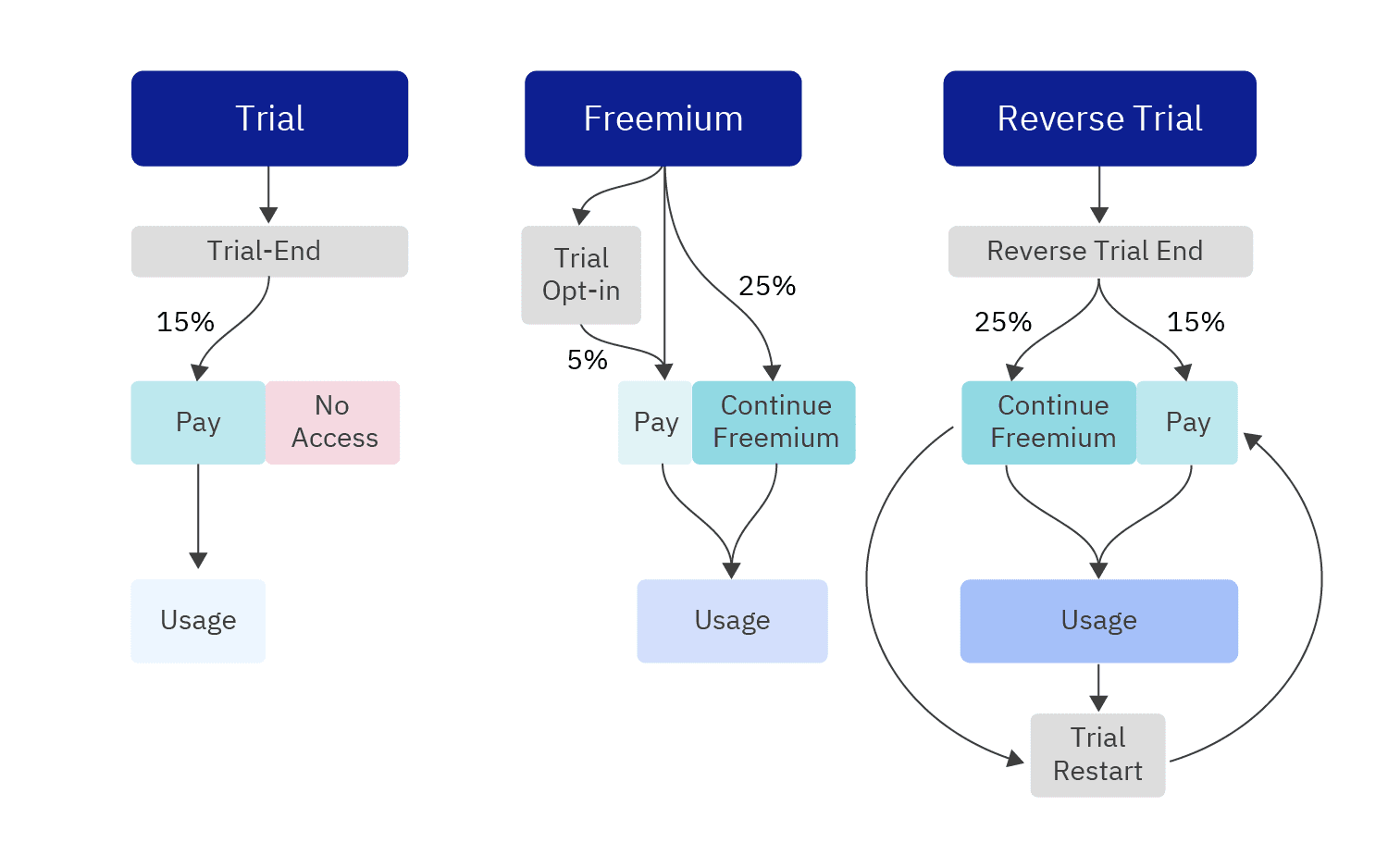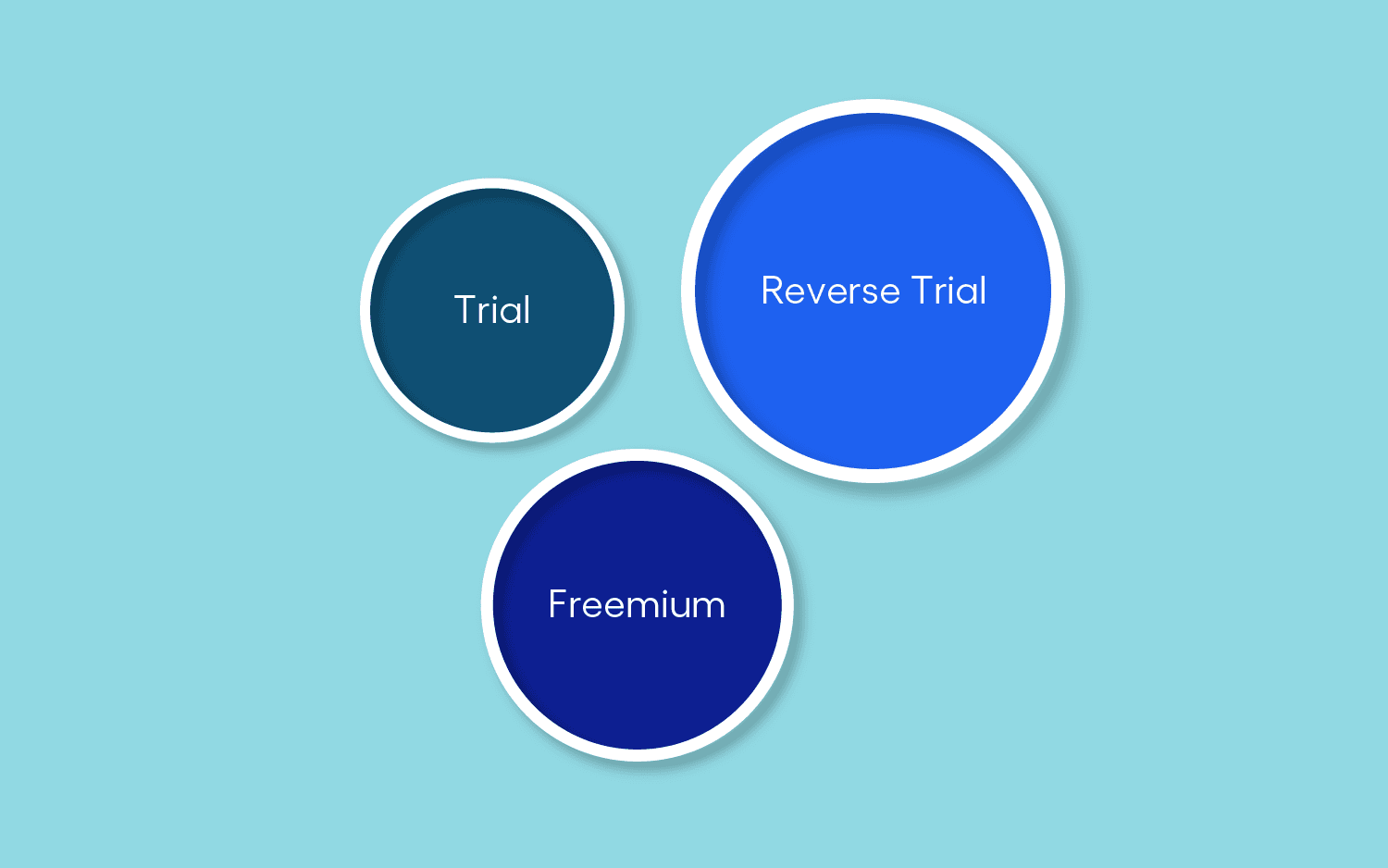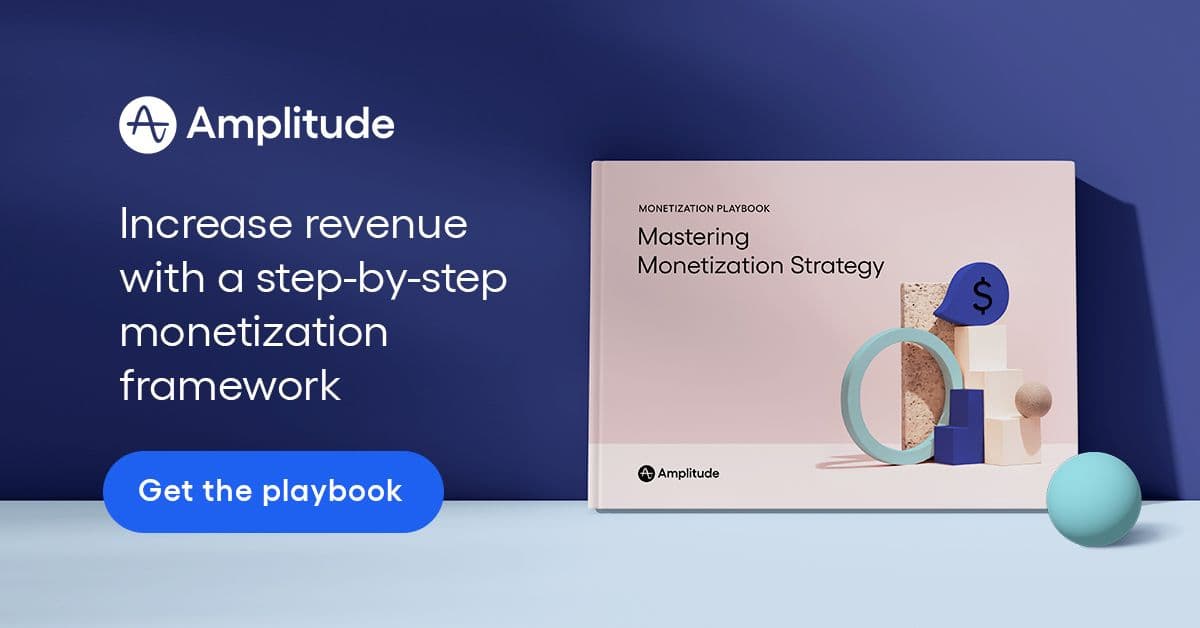Trial or Freemium? Get the Best of Both with a Reverse Trial
Companies considering a free trial model and a freemium plan don’t need to choose. A reverse trial gives you the best of both while minimizing the downsides.
Originally Published on September 7, 2022
Browse by category
Trial or freemium? It’s an age-old question for product-led growth companies. Well, I say, neither. You can capture the best of both worlds with a reverse trial.
A reverse trial gives customers access to paid features and puts them on a freemium plan when the trial ends. The result? You can drive the conversions trials inspire and the product usage freemium plans are known for.
Key takeaways
- While trials encourage conversions, low usage can prevent widespread brand advocacy, and a trial might not be long enough for users to derive value from more advanced features.
- Freemium plans bring in more product usage and feed your growth loops so you can invest more in your product and less in marketing, but they struggle to drive monetization awareness and have lower paid conversion rates.
- Reverse trials combine the two strategies to drive paid conversions and product usage simultaneously.
Trials: Optimal for conversions
Companies that use a trial model offer a version of their paid product for a limited time. Time is utilized as a ‘usage’ value metric. After the trial ends, the customer either pays or must stop using the product altogether.
There are two kinds of free trials:
- Credit card trial: Trials that require your credit card upfront before the ‘free’ trial starts with the automatic charge at the end of the trial
- Free trial: Trials that allow you to enter for free without giving up your credit card information.
If a user gives their credit card information, their card is automatically charged for a paid plan. The benefit to the credit card required model is the extremely high trial-to-paid conversion rate because there’s less friction at the end of the trial to convert the user. As many as 70-80% of users who start this trial will convert because only high-intent customers enter this experience.
But credit cards will deter potential customers from entering the trial in the first place—as many as 80% of people will drop off at the credit card screen. Credit card trials are a great strategy if you are optimizing for paid conversion, but they severely restrict the top of your funnel. This increases your customer acquisition cost (CAC) and can push users toward your competitors.
The benefit of the free trial (without providing payment information) is that you can get more people to try your product, opening up the top of your funnel. This means lower intent customers will be part of your trial experience, so you have to put in much more effort to get the user engaged during the trial to trigger a payment event. Companies typically see a 15% trial-start-to-paid conversion rate with minimal drop-off at the start of the trial.
The perks? Full product access with urgency to pay
A trial has its benefits. Users experience your whole product, including the features they might be willing to pay for, building their habits within your monetization model.
And when the trial ends, your customer will have a choice to pay, given they’ve realized the value of your product. This makes free trials great at driving conversions.
However, trials leave a lot on the table
Trials operate on the concept of ‘time’ being the correct usage value metric, meaning everyone starting a trial experience will take the same amount of time (7, 14, or 30 days) to reach some value. In B2B companies, this favors smaller businesses and discriminates against larger enterprises. What takes a startup a day to accomplish might take an enterprise a month. If you are targeting multiple segments, consider whether ‘time’ is a scalable value metric for you.
Additionally, because there is a time-bound stop to further usage at the end of a trial, companies have a more limited, paying-only user base. But having non-paying users may be a huge strategic advantage, including:
- Landing users early in their journey before they fit your core monetization model, then growing with them to reach monetization potential.
- Engaging basic customers in viral or user-generated content flows, driving indirect monetization by monetizing users they acquire for you.
- Capturing users in adjacent markets to inform future monetization models and use case expansion.
- Building network effects, where free usage increases the value prop for paid users.
In the next section, I will go into more detail about the benefits of non-paying users.
Freemium plans: optimal for usage
Companies that run on a freemium model offer a version of their product for free, forever. The user will never have to pay for the limited product version to keep using it. They may eventually upgrade to a paid plan to access additional features, more usage, or special benefits like priority support.
Attract new users, build brand advocacy, and inform product development
I’m a big fan of the freemium model. Its advantages are seemingly endless:
- There is a lower cost of acquisition due to frictionless entry.
- It is customer focused—no credit card requirements or timing bounds mean we are on their terms, not ours.
- It allows users to build a habit of using your product early on in the customer journey and on their timeline.
- It pushes a version of your product to be commoditized in the market, raising stakes for innovation that can be monetized.
- It forces you to understand what customers are willing to pay versus using time as a bandaid. (You’ll see this in your product usage and conversion data, which you can track with Amplitude.)
- It allows for indirect monetization opportunities on a much larger user base.
- It builds widespread brand advocacy. Even if a user isn’t paying for your product, they’ll bring other people into your product who may pay. This feeds your growth loops—or flywheels—so you can invest more in product development and less in acquisition marketing.
- You can build network effects where free usage increases the value proposition for paid users. LinkedIn is a perfect example of this. Recruiters can use a paid LinkedIn plan to research and reach out to talent. The more people are on LinkedIn, the more recruiters get out of the service. Free accounts make LinkedIn more valuable to its paid users.
- You gain users in adjacent personas to inform future monetization models and use case expansion. For example, you may have built your productivity software for agile teams, but creative teams might also find it useful and stay on the free plan if paid features are geared toward agile users. Knowing there’s a cohort of creative teams using your product, you can prioritize new features or versions of your product catered toward those users.
In companies that run on a freemium model, I typically see a ~5% conversion rate from the free plan to a paid plan. That’s significantly lower than the 15% or 80% conversion rate seen by companies that run on a trial model. But 25% of acquired freemium users continue using the product—for a total engagement rate of 30%+.
So, freemium models drive more usage and opportunity for indirect monetization. They bring in a larger pool of users, and you can often win over a greater number of paid users than the free trial model.
But freemium has its drawbacks, too
I’m betting if you survey your free users, the majority of them will have no idea what your paid features are or what value they would provide. Users on a free plan often lack awareness of your paid features or how they could benefit from them because they haven’t experienced them. They essentially “stay in their swim lane,” only using what you give them for free.
It can also be hard to differentiate the free and paid plans. Too many features on the free plan, and customers will never have a reason to pay. But not enough features, and you won’t be valuable to your free users, and they’ll stop using the product.
What does this look like in practice?
Let’s take a look at that productivity software again. If you offer a freemium product instead of a free trial, your users can build a habit with your product for daily task management and project planning. They might even bring in new users to collaborate with, feeding your growth loop.
As their use case gets more complex—maybe they want to track their team’s workload, set goals, or build complex templates and workflows—they’ll upgrade to gain access to your premium features. Hopefully!
The problem is that they may not know about your premium features or realize how much time they could save using them. They might just stick with your “good enough” free plan without the experience of your paid features.
Reverse trial: The best of both worlds
Take advantage of the benefits of trials and freemium models with a reverse trial to amplify product usage, boost conversions, and reinforce your growth loops.
A reverse trial puts customers in a freemium experience with a timed free trial with access to paid capabilities which reverts to a traditional freemium product after the free trial ends.
It helps users understand the value of paid features, but they don’t get cut off at the end if they don’t want to pay yet. They get to try-before-you-buy paid functionality without harsh time limitations to prohibit further, lower complexity usage.
The trial portion of your user journey gets customers to use paid features instead of only building habits with free features. You shorten the time it takes for a user to get familiar with and consistently use your product, so you’re landing them earlier in their customer journeys. Users who don’t convert at the end of the trial understand what they’re missing, so they may upgrade later when needed.
Using a reverse trial, you get more participants in your growth loops. You may get the 15% conversion rate of the free trial model and drive product usage with the 25% that continues on a freemium plan.

You grow brand affinity and advocacy with users who stay on the free plan and gain indirect monetization with those they share the product with.
You can also restart the trial for free users to continue driving conversions and refamiliarize them with paid features that they might be ready for at a later point in their product usage.
The short of it: You get the best of free trial and freemium and minimize the downsides of each.
Build your reverse trial around your product data
When implementing a reverse trial, you’ll need to deeply examine your customer journey to know when to charge your users and how long to make your trial.
To do so, analyze product usage to understand when users typically need more advanced features and how long it takes them to develop stickiness with paid features. Refine your reverse trial model from there.
A product analytics tool like Amplitude can take your growth to the next level. Use product insights to inform your pricing model, improve your product, and enhance customer experiences.
Try the Amplitude starter plan for free to access product insights that will inform your monetization strategy. If you need more features or event tracking, you can upgrade to a paid plan that grows with you.
If you enjoyed this post, follow me on LinkedIn for more on product-led growth.

Elena Verna
Former Head of Growth, Amplitude
Elena is the former Head of Growth at Amplitude, and Growth Advisor to companies including Krisp, MongoDB, and Maze, and a Board Member at Netlify. She is also a former CMO & Advisor at Miro, SVP for Product & Growth at Malwarebytes, and SVP at SurveyMonkey. Elena has a breadth of experience in PLG models for B2B companies.
More from Elena





